Top speed 415 km/h Wingspan 18 m Cruise speed 334 km/h Engine type Menasco Buccaneer | Range 805 km Length 5.4 m Weight 2,673 kg | |
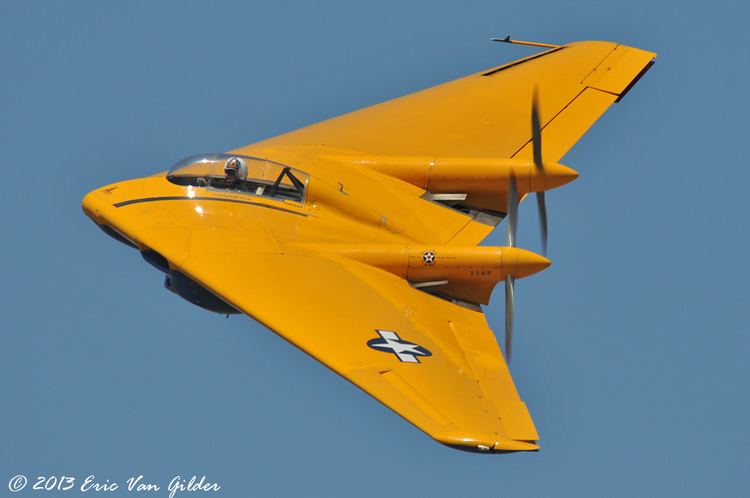 | ||
Number built 4 Primary user United States Air Force Status Prototype only, 4 aircraft preserved First flight 27 December 1942 Designer Jack Northrop Manufacturer Northrop Corporation Similar Northrop YB 35, Northrop YB 49, Northrop N 1M | ||
Northrop n 9m flying wing chino planes of fame airshow 2010
The Northrop N-9M was an approximately one-third scale, 60-ft span all-wing aircraft used for the development of the full size, 172-ft wingspan Northrop XB-35 and YB-35 flying wing long-range, heavy bomber. First flown in 1942, the N-9M (M for Model) was the third in a lineage of all-wing Northrop aircraft designs that began in 1929 when Jack Northrop succeeded in early experiments with his single pusher propeller, twin-tailed, twin-boom, all stressed metal skin Northrop Flying Wing X-216H monoplane, and a decade later, the dual-prop N-1M of 1939–1941. Northrop's pioneering all-wing aircraft would lead Northrop-Grumman many years later to eventually develop the advanced B-2 Spirit stealth bomber, which debuted in Air Force inventory in 1989.
Contents
- Northrop n 9m flying wing chino planes of fame airshow 2010
- Design and development
- Operational history
- Specifications N 9M
- References
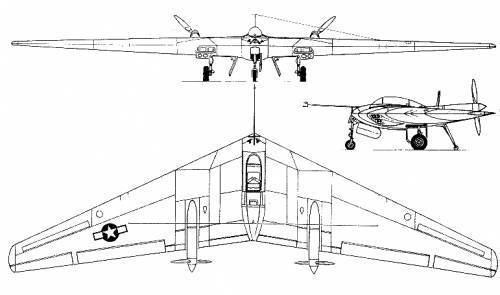
Design and development
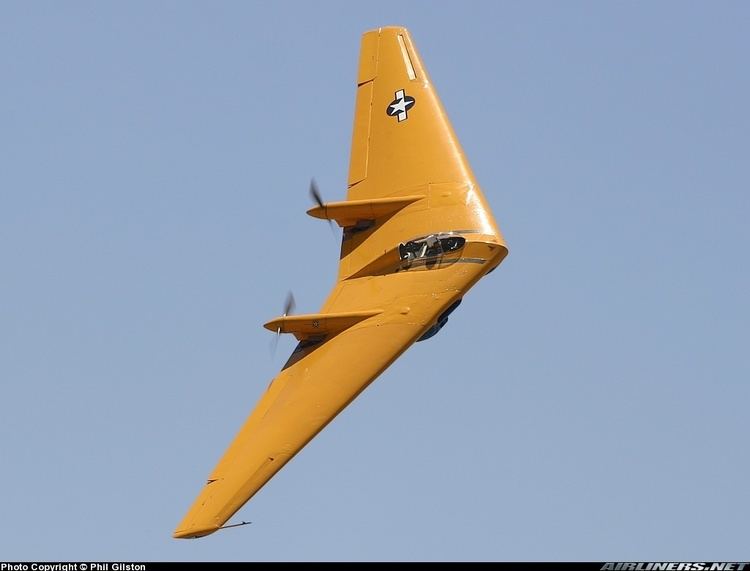
On 30 October 1941, the preliminary order for development of the B-35 Flying Wing bomber was confirmed, including engineering, testing, and most importantly a 60 ft (18 m) wingspan, one-third scale aircraft, designated N-9M. It was to be used in gathering data on flight performance and for familiarizing pilots with the program's radical, all-wing design. The first N-9M was ordered in the original contract, but this was later expanded to three test aircraft in early 1943. A fourth was ordered a few months later after a crash of the first N-9M destroyed that airframe; this fourth N-9M incorporated various flight test-derived improvements and upgrades, including different, more powerful engines. The four aircraft were designated N-9M-1, -2, -A, and -B, respectively.
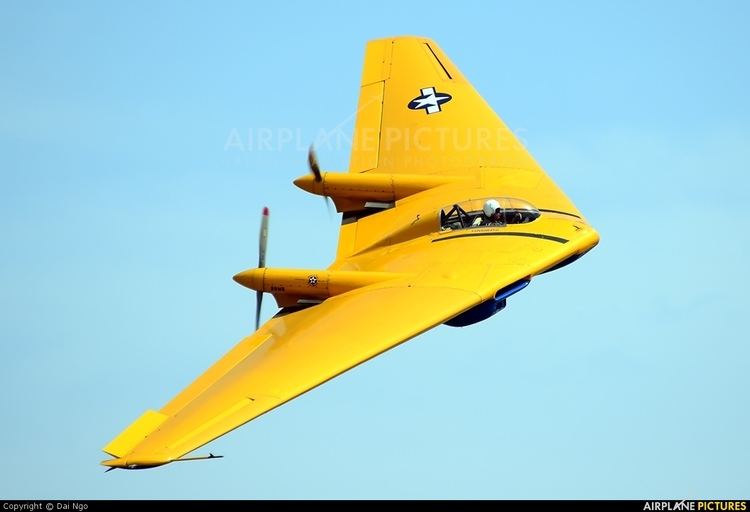
The N-9M framework was partially constructed of wood to reduce its overall weight. The wings' outer surfaces were also skinned with a strong, specially laminated plywood. The central section (roughly equivalent to the fuselage) was made of welded tubular steel. The aircraft were originally powered by two 290 hp (216 kW) Menasco C6S-1 inverted air-cooled straight-six engines, driving twin-bladed propellers, except for the N-9MB which was powered by 2x 300 hp (224 kW) Franklin XO-540-7 engines.
Operational history
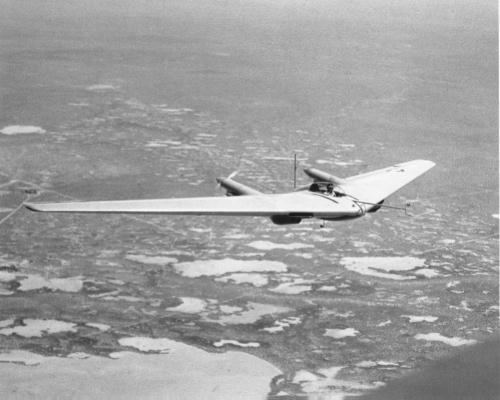
The first flight of the N-9M occurred on 27 December 1942 with Northrop test pilot John Myers at the controls. During the next five months, 45 flights were made. Nearly all were terminated by mechanical failures of one sort or another, the Menasco engines being the primary source of those problems. After roughly 22.5 hours of accumulated flight time, the first N-9M crashed approximately 12 miles (19 km) west of Muroc Army Air Base on 19 May 1943. The pilot, Max Constant, was killed as he attempted to recover the aircraft from a right-hand, 60° nose-down spin. The investigation found that Constant had suffered control reversal, the control column had been pressed against his chest during his recovery attempt from the steep spin, preventing him from parachuting to safety. Steps were taken to fix this problem and prevent it from happening on other N-9M test aircraft.

When Northrop's Flying Wing bomber program was canceled, all remaining N-9M flight test aircraft, except for the final N-9MB, were scrapped. For more than three decades, it slowly deteriorated until the Chino, California Planes of Fame Air Museum acquired the aircraft in 1982 and began the labor-intensive restoration process. For the next two decades, former Northrop employees and other skilled volunteers slowly returned the N-9MB to its final flight configuration. Since 1993, the yellow-and-blue Flying Wing has been exhibited, with flight demonstrations at several airshows every year.
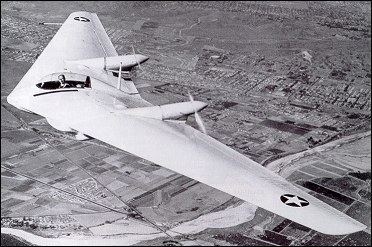
In April 2006, the N-9MB suffered an in-flight engine fire. The aircraft was landed safely with limited damage. Donations to the museum were solicited for its repair, and the aircraft was fully repaired to flight status. It was once again flown during the annual Chino airshow on 15–16 May 2010.
Specifications (N-9M)
General characteristics
Performance
